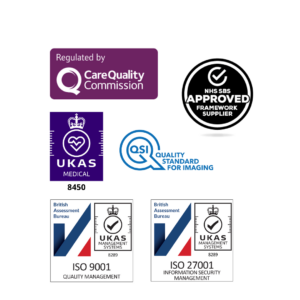I’ll kick off this week with a subject that has been “kicking around” for some time; the early detection of lung cancer. Lung cancer is the third most common cancer in the UK and has a stubbornly low ten-year survival rate of around 10%. While there have been some improvements and developments in treatment, the poor outcomes are generally because it is often picked up quite late. Contrast this with breast cancer, which can be picked up early and has a 10-year survival of around 85% because of increasing awareness and the national mammogram programme.
There has been a great deal of debate in the medical world as to whether or not we should use low dose CT scans as a screening mechanism for lung cancer. The main risk with CT scans is that they produce radiation, similar to X rays. So it’s essential to only use them when absolutely necessary. In contrast, MRI scans do not produce radiation and so, are completely safe.
Back in January 2020, the British Medical Journal (BMJ) published the results of the Nelson Study from the Netherlands and Belgium. The study included just over 13,000 men and 2,500 women between 50-74 years old who were current or former smokers. The participants were divided into one group that was scanned with low dose CT scan and a group with no screening.
The results were impressive a 25% reduction in men from lung cancer at 10 years and a 33% reduction in death from lung cancer for women at 10 years. There was also a shift to earlier diagnosis in both men and women, enabling the cancers to be treated much earlier.
There had been some concern about whether or not such screening would lead to overdiagnosis. This is where patients are told it is likely they have lung cancer only to find through subsequent investigations that they do not. However, the results from the trial showed a fairly low false-positive rate. Thus low dose CT screening for lung cancer does seem to be an effective means of detecting lung cancer early in those at risk.
This week’s BMJ also had an article discussing whether low-dose CT scans should replace x rays as the first-line diagnostic test for lung cancer. It follows the case of a 50-year-old non-smoker who sadly developed lung cancer, which was not picked up for over a year despite visits to her Doctor and Chest x rays.
A chest X-Ray (CXR) has always been the investigation of choice in suspected lung cancer. However, it is well recognised that an apparently normal CXR can occur. If symptoms persist, further investigations should be undertaken, such as a low dose CT scan.
There is now increasing evidence that by the early use of low dose CT scans, lung cancer can be detected early, which is the crucial step in improving survival rates. Hopefully, this will soon be adopted as best practice in the UK.
Managing joint pain
Next to a subject that is all too common; joint pain. Maturity brings with it the joys of aching joints. For some, this is relatively minor, but for others, arthritic changes can lead to excruciating joint pain both in the day and at night.
Doctors have a wide range of pain medicine available to them, but which are most effective for this type of arthritic pain?
In this week’s BMJ, Costa et al. undertook a study of two of the most commonly used medicines for joint pain; non-steroidal anti-inflammatories (NSAIDs), paracetamol and opioids. NSAIDs are drugs such as ibuprofen, naproxen, and diclofenac. Opioids are drugs such as codeine, morphine and tramadol.
The study reviewed 192 previous trials involving 102,000 patients. It looked at how effective drugs were at reducing pain as well as how well they were tolerated.
Oral diclofenac and etoricoxib 60 were the two most effective drugs. These are both commonly used in practice. Topical diclofenac also had a good effect on pain reduction. However, all opioids were found to be far less effective at having high levels of side effects.
This is a widespread medical problem, and the study reinforces the need to treat it with the most appropriate meds. Topical NSAIDs are an extremely useful place to start as not only do they have a good effect, but they have very few side effects. It is often tempting to use opioids as they are seen as strong pain killers; however, not all pain is the same, and some types of pain don’t respond to some groups of pain killers. It sclera that opioids are ineffective in joint pain and are likely to cause harm and not benefit.
Understanding the health risks of air pollution
Next to an item that is increasingly raising its head as a significant cause for concern; air pollution.
Chen et al. report on a study in the BMJ concerning exposure to fine particle air pollution. It has increasingly been recognised that exposure to PM2.5 particles is a leading cause of death and disability. These are microscopic particles less than 2.5 microns in diameter. (a human hair is somewhere between 50 -70 microns in diameter) Globally exposure to these particles accounts for about four million deaths a year. They are a product of combustion and in the developed world due to traffic and other sources of air pollution. In the developing world, cooking stoves are probably the most common source.
Chen studied just over 663,00 Canadians aged 25-89 years who lived in areas with either high or low PM 2.5 levels for five years and then moved.
The team found that those who moved from a high PM2.5 area to an intermediate area showed a 6.8% reduction in mortality. It was also noted that the more significant the reduction in exposure, the bigger the reduction in mortality.
Increases in mortality were seen in those who moved from low to intermediate or high areas.
So why is this important? The study considered low levels between 4.6 low, 6.7 intermediate and 9.2 as high.
I recently bought an air quality meter to determine if rooms are sufficiently ventilated to reduce Covid; however, it also measures PM2.0. My average reading on the streets of London is around 10, and if I go on the Tube, the reading is anywhere between 120 and 150.
Air pollution is rarely something you can see unless it is severe and the weather is very still. However, it has a profound effect on our long term well-being, and it’s certainly something we should be paying attention to.
The health benefits of plant-based polyunsaturated fatty acids
Finally to a paper on the health benefits of plant-based polyunsaturated fatty acids. It has long been the mantra of healthy eating to avoid saturated fatty acids and trans fatty acids. Omega 3 fatty acids, plant-based polyunsaturated fatty acids are frequently recommended but is the evidence really there to match the dietary advice?
This week’s BMJ Naghshi et al. studied the effect of alpha-linolenic acid (ALA) and linoleic acid, the two most common essential polyunsaturated fatty acids available in plant sources.
These are found in soybean, nuts, flaxseed, and other plant food sources.
Naghshi reviewed forty-one previous studies looking at the effect of a diet rich in ALA on heart disease and overall mortality.
They found that a high intake of ALA was related to a lower risk of death from all causes; however, there was a very slight increase in deaths from cancer. They also noted that those who increased their ALA intake by 1g a day (0.5 oz of walnuts a day) had a 5% lower risk of deaths from all causes.
Their conclusion was that increasing your daily intake of ALA certainly appears to have a beneficial effect on overall mortality; however, there was a small risk of increasing death from cancer in those with the highest increases. However, moderate increases still have a beneficial effect on heart dioceses whilst minimising the changes in cancer deaths.
So what does this mean? Plant base fatty acids are good for you but in moderation.
Well, that’s all for this week, hope you found it informative.
 OUR BLOG
OUR BLOG

 Paul Zollinger-Read CBE
Paul Zollinger-Read CBE




